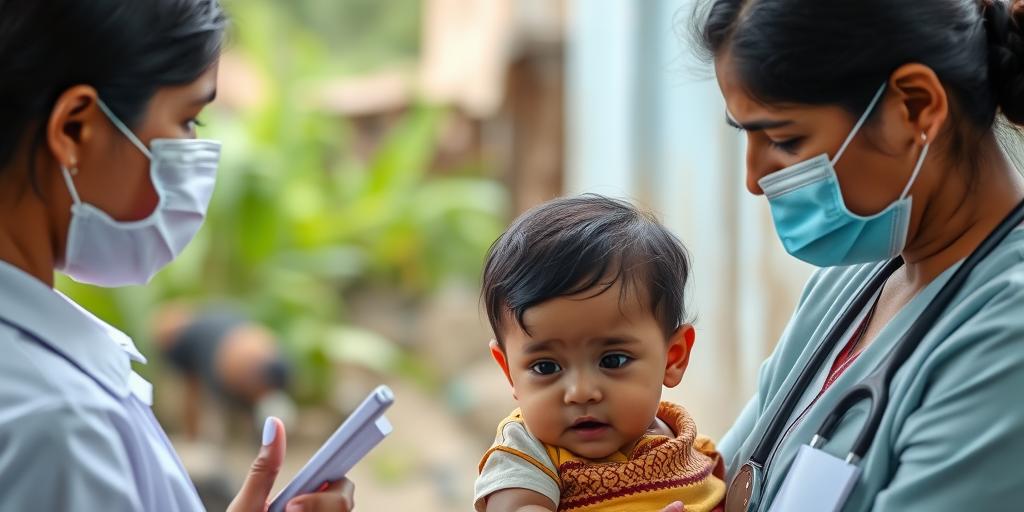Maternal and Child Health in India: 2025 Milestones
Introduction
Maternal and child health (MCH) is a critical indicator of a nation’s overall well-being. In India, significant strides have been made in improving MCH outcomes, but challenges remain. This article outlines the key milestones and goals for maternal and child health in India by 2025, focusing on strategies, interventions, and expected outcomes.
Key Milestones and Goals for 2025
- Reducing Maternal Mortality Rate (MMR)
Goal: Achieve an MMR of below 70 per 100,000 live births.
Strategies:
Strengthening healthcare infrastructure: Upgrading primary health centers (PHCs) and community health centers (CHCs) to provide comprehensive antenatal, intra-natal, and postnatal care.
Enhancing skilled birth attendance: Training and deploying more skilled birth attendants (SBAs) to ensure safe deliveries.
Improving access to emergency obstetric care: Establishing and equipping emergency obstetric care units at strategic locations.
Promoting institutional deliveries: Encouraging pregnant women to deliver in healthcare facilities through incentives and awareness programs.
- Decreasing Infant Mortality Rate (IMR)
Goal: Reduce IMR to below 25 per 1,000 live births.
Strategies:
Strengthening immunization programs: Ensuring complete immunization coverage for all infants against vaccine-preventable diseases.
Improving neonatal care: Establishing special newborn care units (SNCUs) and newborn stabilization units (NBSUs) at district and sub-district levels.
Promoting exclusive breastfeeding: Encouraging mothers to exclusively breastfeed their infants for the first six months.
Addressing malnutrition: Implementing programs to combat malnutrition among infants and young children.
- Enhancing Child Health
Goal: Reduce under-five mortality rate (U5MR) to below 35 per 1,000 live births.
Strategies:
Integrated Management of Neonatal and Childhood Illnesses (IMNCI): Implementing IMNCI guidelines to manage common childhood illnesses effectively.
Vitamin A supplementation: Providing regular vitamin A supplementation to children to prevent deficiency and improve immunity.
Deworming programs: Conducting periodic deworming campaigns to reduce parasitic infections.
Improving sanitation and hygiene: Promoting sanitation and hygiene practices to prevent waterborne diseases.
- Improving Antenatal Care (ANC)
Goal: Ensure that at least 90% of pregnant women receive four or more antenatal care visits.
Strategies:
Early registration of pregnancy: Encouraging early registration of pregnancy to ensure timely ANC services.
Comprehensive ANC services: Providing comprehensive ANC services, including screening for anemia, hypertension, and gestational diabetes.
Iron and folic acid supplementation: Ensuring regular iron and folic acid supplementation to prevent anemia in pregnant women.
Health education: Providing health education on nutrition, hygiene, and safe motherhood practices.
- Strengthening Health Systems
Strategies:
Increasing healthcare financing: Allocating more resources to the health sector to improve infrastructure and services.
Strengthening human resources: Training and recruiting healthcare professionals, including doctors, nurses, and community health workers.
Improving supply chain management: Ensuring the availability of essential drugs and supplies at all levels of the healthcare system.
Leveraging technology: Using technology to improve data collection, monitoring, and service delivery.
Expected Outcomes
Achieving the outlined milestones and goals by 2025 will lead to significant improvements in maternal and child health outcomes in India. These include:
A reduction in maternal and child mortality rates.
Improved health and nutritional status of women and children.
A healthier and more productive population.
Reduced healthcare costs due to preventive interventions.
Conclusion
India is committed to improving maternal and child health outcomes by 2025. By focusing on key strategies such as strengthening healthcare infrastructure, enhancing skilled birth attendance, improving access to emergency obstetric care, and promoting institutional deliveries, the country can achieve its goals and ensure a healthier future for its women and children. Continued investment, innovation, and collaboration will be essential to achieving these milestones and building a healthier nation.
